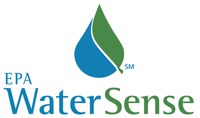Look For the WaterSense Label
(Click the image below to view a high-resolution image that can be downloaded)
The Environmental Protection Agency has developed a logo to help homeowners make informed decisions when buying water-using products, such as toilets and faucets.
The WaterSense label will indicate the products and programs that meet water-efficiency and performance criteria.
Homeowners who use water-efficient products and practices can help save natural resources, and reduce their water consumption and costs, according to the EPA.
""To use a WaterSense label, a company must have a signed partnership agreement in place with the EPA and agree to meet all criteria in the EPA's specifications for water efficiency and performance,"" says Roxanne Johnson, North Dakota State University Extension Service water quality associate.
This program is similar to the EPA's EnergyStar program, which began in 1992.
So far, the only products that can carry the WaterSense label are toilets using 1.28 or fewer gallons of water per flush. The EPA says toilets account for nearly one-third of the water used in the home, but with the installation of high-efficiency toilets (HETs), families could reduce their water consumption by 20 percent and decrease their water bill by 10 percent.
HETs have been undergoing extensive research for the past six years and, according to the EPA, look unchanged on the exterior. The big changes are interior design modifications that significantly improve flow and reduce water usage.
Faucets eventually may carry the WaterSense label as well. The EPA recently wrote specifications for high-efficiency bathroom sink faucets. Johnson says the new specifications will lower the flow rate from 2.2 gallons per minute (gpm) to 1.5 gpm at 60 pounds per square inch, which will represent a 32 percent decrease in water use. Some older faucets have flow rates of 3 to 7 gpm.
The EPA expects the aerator that will decrease the flow rate to this level will cost $10 and save an average household more than 500 gallons of water each year. While manufacturers are not building aerators with this lower gpm yet, several types and models of faucet components and accessories with the potential to control the flow to this level are available
""Watch for the WaterSense label when making your purchasing decisions,"" Johnson says. ""The average family of four uses 400 gallons of water each day. The small changes we make now will conserve water for future generations."
For more information on conserving water, contact Johnson in the NDSU Agricultural and Biosystems Engineering Department at (701) 231-8926 or mailto:roxanne.m.johnson@ndsu.edu. For additional information on the WaterSense program, visit its Web site at http://www.epa.gov/watersense/index.htm.
Agriculture Communication
| Source: | Roxanne Johnson, (701) 231-8926, roxanne.m.johnson@ndsu.edu |
|---|---|
| Editor: | Ellen Crawford, (701) 231-5391, ellen.crawford@ndsu.edu |


